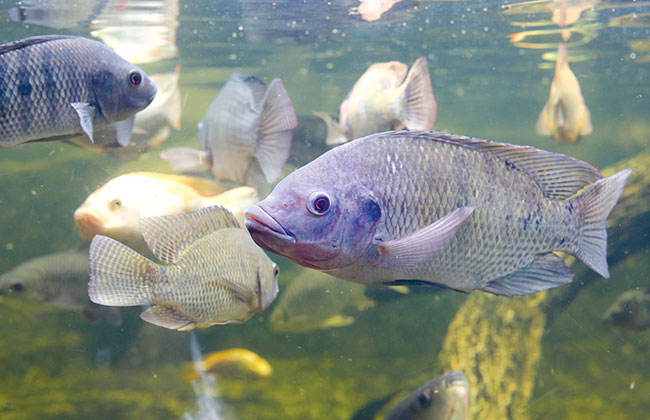
Features
Breeding
Fish Health
Egypt study touts duckweed benefits on Nile tilapia
August 14, 2020 By Ruby Gonzalez

It is one approach that delivers three results. By putting duckweed in Nile tilapia broodstock ponds, it acts as a biofilter, provides high-nutrition feed supplement and increases production of fry.
This is the outcome of the study, “Duckweed as a biological filter in tilapia fish hatcheries and its impact on tilapia reproduction,” conducted in Egypt, where decreasing access to freshwater has led some tilapia hatcheries to tap agricultural drainage water.
Duckweed is widely used as a less expensive alternative in the phytoremediation process.
“According to the present study, duckweed can be efficiently employed as biofilter within the Nile tilapia (O. niloticus) broodstock ponds for reducing nutrients concentrations, nitrogen and phosphorus. Thus, this reduces the water contamination and, subsequently, water consumption in the tilapia hatcheries,” said authors Ahmad A. A. Ali et al, who are from the Agricultural Research Centre in Egypt.
Duckweed increases the level of dissolved oxygen so it helps in stemming the harmful effects of ammonia. It can also reduce the level of total suspended solids as well as microalgae within the fish ponds by competing on nutrients.
“Furthermore, duckweed increases the O.niloticus fry production, which enhances the economic efficiency of tilapia hatcheries. Finally, duckweed itself can be used as feed supplement for fish since it has a high nutritional value,” they said.
Three treatments were prepared in concrete ponds at the Central Laboratory for Aquaculture Research. The first, the control pond, had no duckweeds (ODW). The second had duckweed density of 200 grams (200DW), and third with 400 grams (400DW). All had identical number of broodstock. Artificial feed was applied daily. The experiment was done over four hatching cycles of 15 days each.
The best performance was observed in 400DW. Total ammonium concentration decreased by over 52 percent. It had the highest density growth difference of duckweeds and highest fry production, which was almost 14 percent higher than the control.
Treatment 200DW likewise performed better than control.
Since lower densities of duckweed than recommended were used, the authors said that higher removal rates can be achieved at high stocking density.
Print this page
Advertisement
- Canola protein a viable aquaculture feed ingredient: study
- Governments urged to address disease outbreaks in shrimp farms





